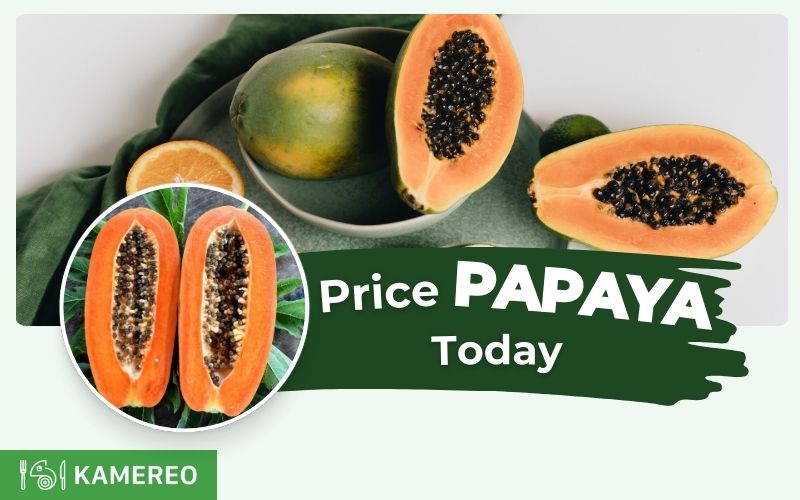Ripe papayas with fragrant yellow/red flesh are always a top fruit for dessert in many families. So, what is the papaya price today? Let’s find out with Kamereo the latest prices of ripe, yellow-fleshed, and red-fleshed papayas in the market so you can choose delicious and sweet papayas at affordable prices!
📖 This article belongs to the TODAY’S MARKET PRICE NEWSLETTER series
This is a series of articles providing detailed and updated information on the prices of goods on the market.
Today’s Papaya Price
Current papaya prices have significant variations depending on the variety and type, ranging from 10,000 to 60,000 VND/kg. The lowest price is from 10,000 VND/kg for Thai dwarf papaya, and the highest is for premium red-fleshed papaya, which can be up to 60,000 VND/kg.
To better understand the prices of each type of papaya, please see the detailed price list below:
| Type | Price | Unit |
|---|---|---|
| Thai dwarf papaya | 10,000 - 20,000 | VND/kg |
| Taiwanese papaya | 35,000 - 45,000 | VND/kg |
| Yellow-fleshed papaya | 35,000 - 55,000 | VND/kg |
| Red-fleshed papaya | 39,000 - 55,000 | VND/kg |
| Ripe papaya | 22,000 - 30,000 | VND/kg |
| Green papaya | 19,000 - 25,000 | VND/kg |
(Updated: February 2025)
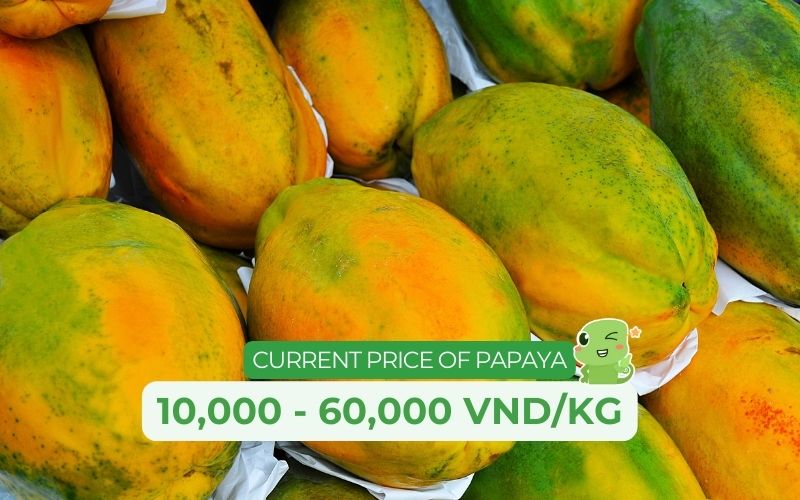
Note: Papaya prices in the market may vary depending on many different factors including type, time of purchase, and supplier.
Papaya prices at Kamereo:
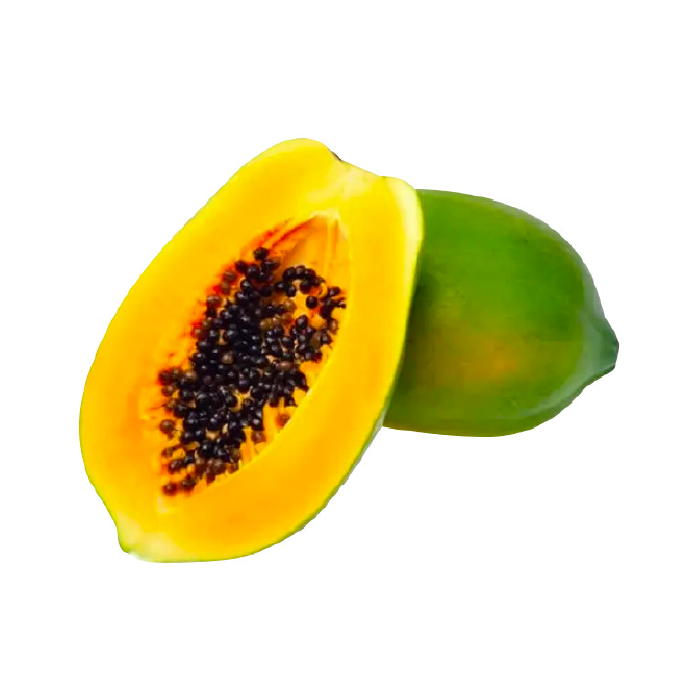
Yellow Papaya South
28,350đ/KILOGRAM
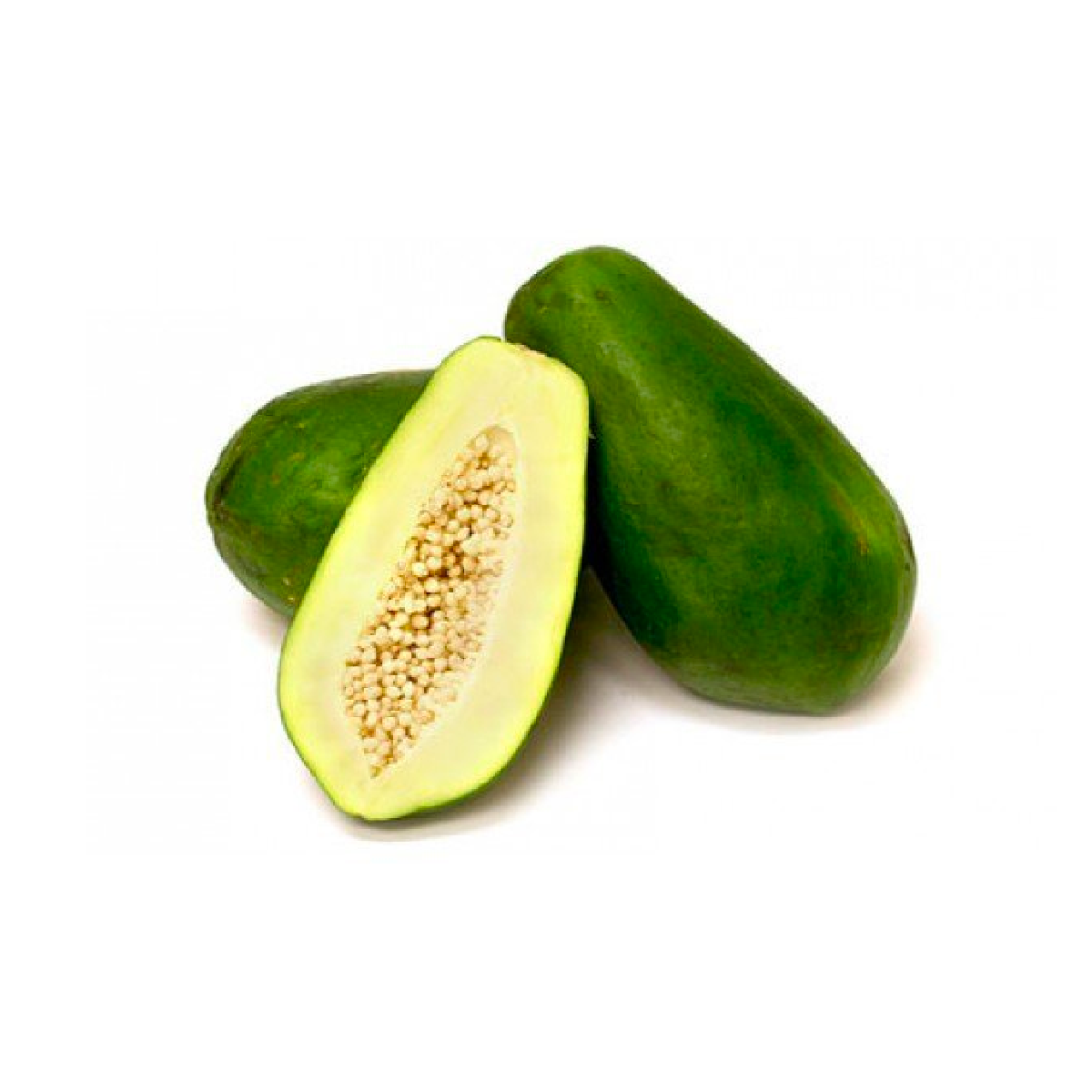
Green Papaya South
16,800đ/KILOGRAM
20,000đ/KILOGRAM
Kamereo – Supplier of Fresh, Delicious Papayas at Good Prices
Kamereo is a supplier of fresh and delicious papayas with competitive prices, a trusted partner of many restaurants, hotels, and canteens. Kamereo’s papaya sources are purchased directly from leading farms that meet VietGAP standards, ensuring quality and food safety. A strict inspection and preservation process helps maintain the freshness and natural flavor of the papaya.
As an all-in-one supplier, Kamereo brings convenience and efficiency to customers. Businesses can find all the necessary ingredients and food at Kamereo, simplifying the purchasing process and supply management.
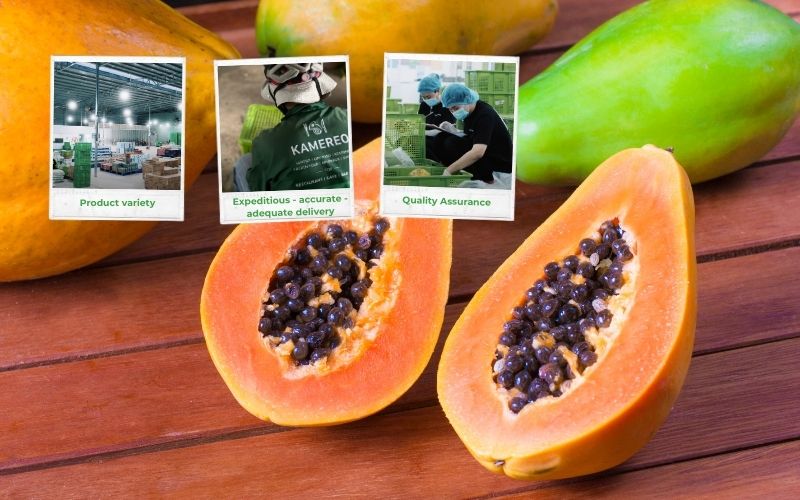
Kamereo also owns a modern electronic invoice management system, allowing customers to easily track and control costs. Here, all transactions are clearly and transparently recorded, ensuring accuracy and reliability. Thereby, the platform will contribute to improving the efficiency of financial management and optimizing business operations.
Besides, the prices at Kamereo are also a plus as they are always publicly posted, updated directly on the website, and remain stable for a long time. Thanks to this, businesses can easily track, forecast, and adjust their budgets accurately. In particular, we also provide fast delivery service, ensuring delivery time before 6 am if ordered before 12 pm.
Distinguishing Types of Papayas in the Market
Papaya is a familiar and popular fruit in Vietnam. Thanks to the variety of types, consumers can easily choose their favorite products, depending on their preferences and needs:
- Thai dwarf papaya: Originating from Thailand, this papaya variety is favored for its sweet taste, thick flesh, and characteristic aroma. The fruit usually has an average size of 1.5 – 2kg, few seeds, and is easy to separate the flesh. Thai dwarf papaya can be eaten directly, made into salads, smoothies, ice cream, or jam.
- Taiwanese papaya: Harvested from October to November every year, Taiwanese papaya stands out with its large fruit size, averaging from 1.5 – 3kg. The flesh has a beautiful red-orange color, a moderately sweet taste, and a hard shell that is less prone to bruising, making it convenient for transportation.
- Yellow-fleshed papaya: This is a domestic papaya variety with an average weight of about 1.5kg. The advantage of this type of papaya is its attractive bright yellow color and characteristic sweet aroma.
- Red-fleshed papaya: Oval-shaped with a pointed head, the skin is yellow and green when ripe. The highlight of this papaya variety is its crispness and aroma, however, the sweetness is less than other types.
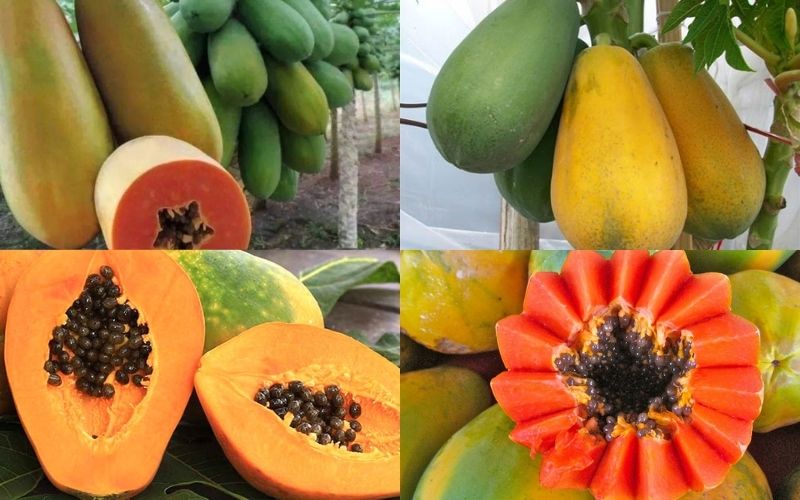
Tips for Choosing Delicious, Naturally Ripened Papayas
To choose delicious and naturally ripened papayas, you can refer to some of the following small tips:
- Observe the stem: The stem of naturally ripened papaya will turn yellow. Therefore, you should avoid choosing fruits with green stems but the fruit is already golden yellow because it may have been artificially ripened.
- Based on shape: Usually, you should choose long papayas that feel heavy in your hand and still have sticky sap on the stem. These fruits will be sweet, fragrant, have few seeds, and thick flesh. At the same time, you should avoid round and large fruits with dry stems because they may be artificially ripened.
- Based on color: Naturally ripened papayas are usually not evenly ripe, may have a layer of white mold on the surface and a few black spots or small dents. Also, you should not buy fruits with shiny skin that feel hard to the touch even though the skin is already yellow.
- Press on the surface of the fruit: If the papaya is ripe on the tree, when you gently press on it, the outer skin will be evenly soft. If the skin is hard, does not dent but is already yellow, it may be artificially ripened.

Frequently Asked Questions
How much is 1 kg of papaya?
The price of papaya in the market today fluctuates quite a lot, depending on the variety and quality of the fruit. Consumers can easily find Thai dwarf papaya at an affordable price from only 10,000 VND/kg. Meanwhile, high-class papayas, especially red-fleshed papaya, have a significantly higher selling price, which can be up to 60,000 VND/kg.
When is red-fleshed papaya best to eat?
To optimize health benefits, you should eat red-fleshed papaya in moderation at the following times:
- 30 minutes before breakfast to boost energy.
- With or 30 minutes after lunch to improve digestion and vitamin absorption.
- After dinner as a healthy dessert.
What is the papaya price at the farm today?
Today’s papaya price at the farm ranges from 10,000 – 20,000 VND/kg, depending on the variety, time of purchase, and market supply and demand. Therefore, to buy the product at the most reasonable price, you need to consult prices from many different sources before deciding.
Conclusion
In general, papaya prices are not fixed and often fluctuate over time. Therefore, you need to monitor and update prices regularly to make appropriate business decisions. In particular, to optimize business efficiency, don’t miss other useful articles in Kamereo’s F&B Business Tips section!
See more:



